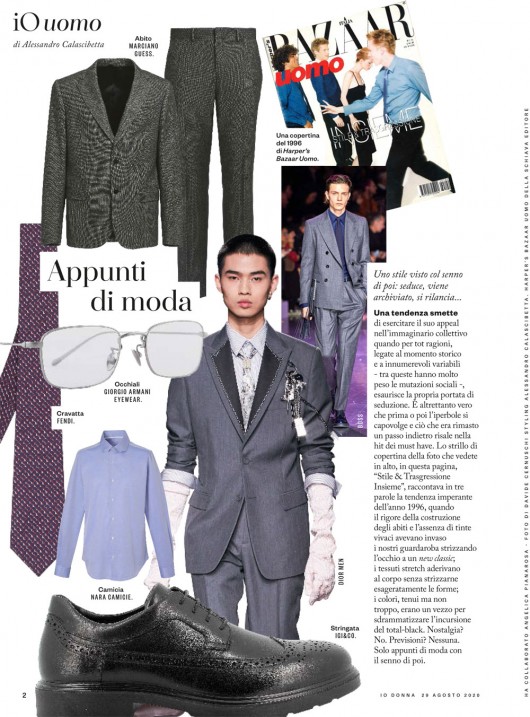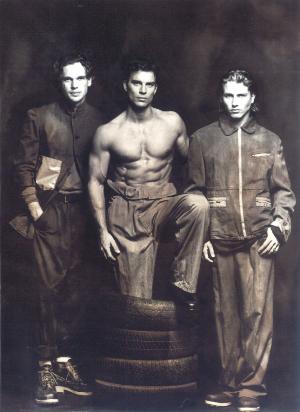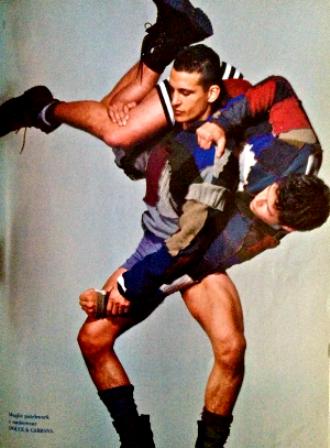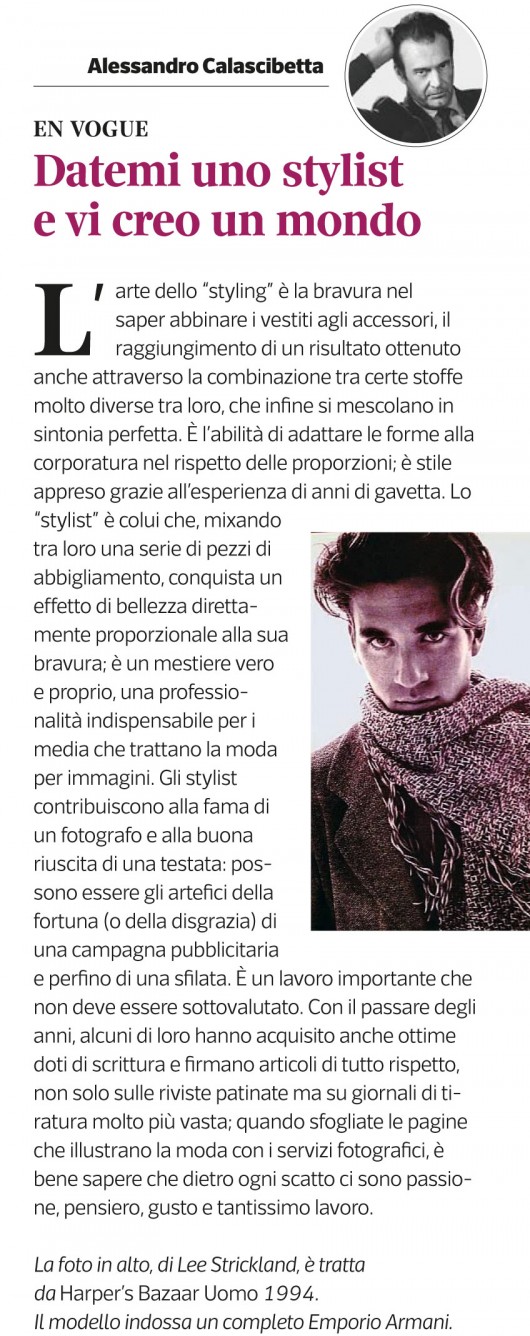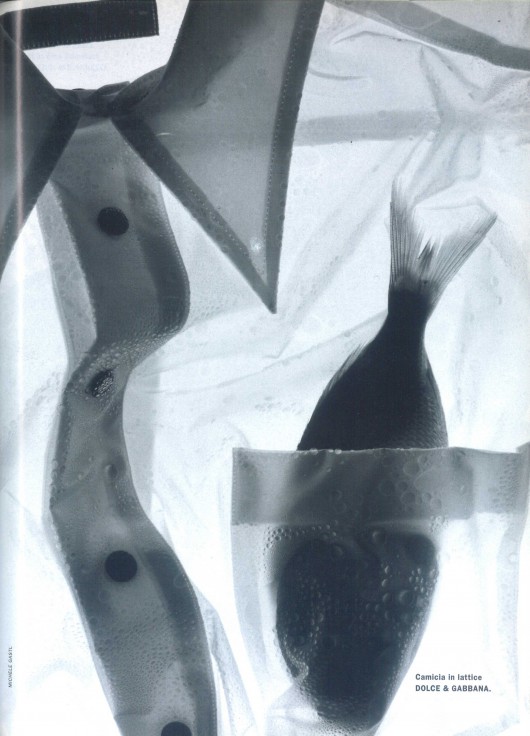IO UOMO – APPUNTI DI MODA
Fashion notes. A trend stops to be appealing for several reasons, based on the historic moment and on countless variables – among them, the social mutations. It’s true that, sooner or later, the hyperbole overturns and what was neglected comes back again in the must haves top hit. The cover headline of the picture you see below, in this page, “Style&Transgression together”, sums up in three words the main trend of 1996, when the sobriety of the suits’ tailoring and the lack of bright colors invaded our wardrobes, winking to a new classic; the stretch fabrics fitted the body without squeezing its shapes; the colors, pale but not too much, were a trick to play down the total-black. Nostalgia? No, it’s not. Forecasts? Neither. Only fashion notes in retrospective.





